Multimeters are a helpful tool for measuring electrical components’ voltage, current, and resistance. However, one of their most useful applications is in measuring power. Power is the rate at which energy is transferred or converted from one form to another. It’s expressed in watts (W) and can be measured using a multimeter by calculating the product of voltage and current.
To measure power using a multimeter, you need to set it to the correct mode – either AC or DC depending on the type of electrical component you’re testing. Then, connect the leads of your multimeter across the two points you want to test – this could be across a resistor or between two wires carrying electricity. Once attached, please turn on the device you’re testing so that voltage and current flow through it.
How To Measure Power Using a Multimeter?
Measuring power with a multimeter is essential for anyone in electronics or electrical engineering. A multimeter is an instrument that measures voltage, current, and resistance. It can also measure power, the rate at which energy is transferred from one point to another. Power is usually measured in watts (W) or kilowatts (kW), and it should be noted that one watt of power is equivalent to one joule per second.
- Set the Multimeter to Measure the Power
Before beginning, set your multimeter to measure power. This will allow you to measure the power consumed by any device or appliance accurately. You must select the correct unit for power measurement; if you measure in watts (W), ensure the multimeter is set to W, and if you measure in kilowatts (kW), make sure it is set to kW.
- Select an Appliance
Next, choose an appliance or device you want to measure the power of. You should know its voltage requirements before beginning to ensure a safe and accurate measurement.
- Connecting the Multimeter
Once you’ve chosen an appliance, connect your multimeter to it to measure its power consumption. Ensure that the positive and negative probes are connected properly, as reversing them could damage sensitive components or cause a fire hazard.
- Taking Measurements
Now that everything is connected, you can start taking measurements of the device’s power consumption. Depending on the type of device you are measuring, different readings will be required; for example, if you are measuring a motor with multiple speeds, measure each speed separately to get accurate results.
- Recording Results
Finally, once all measurements have been taken, record the results to understand the device’s power consumption better. Make sure to be as thorough and precise as possible in your measurements, as even small discrepancies can lead to inaccurate readings. Additionally, it is important to note any anomalies that may occur during the process, such as fluctuations or unexpected spikes in power levels.
- Analyzing Results
Once the data has been collected and recorded, you can begin analyzing it to understand better how power is consumed and what areas require improvement. For example, if you are measuring a motor with multiple speeds, compare the results from each speed to see where improvements could be made; perhaps there is an issue with one of the components causing it to consume more power than necessary. Additionally, you should compare the results of your tests with the expected levels of power to identify any discrepancies that may exist. This can help you pinpoint potential problems before they become too costly or dangerous. By understanding how power is utilized and where potential issues may arise, you can better manage energy consumption and maximize efficiency.
- Applying Lessons Learned
Once you have identified areas for improvement, you can put them into practice to increase efficiency and reduce costs associated with energy usage. Various strategies can be employed, such as utilizing renewable energy sources, improving insulation, installing smart meters, or changing components for more efficient models. Additionally, by understanding power dynamics, you can better anticipate potential issues arising from certain actions and take steps to rectify them. Not only will this help reduce energy costs, but it can also help you avoid costly and dangerous incidents.
By understanding the different forms of power and how they interact with each other, you can maximize your energy efficiency and ensure a safe and cost-effective environment. Knowledge is power; use that knowledge to create an efficient and safe system for yourself and others to create a better future.
Calculating power using Ohm’s law
Using Ohm’s law, you can measure the power of an electrical device by calculating the current (I) through it multiplied by its voltage (V). The formula for this is P = I x V.
Measuring power using a multimeter:
- Gather your tools: A multimeter, a wire with an alligator clip on each end, and the device you wish to measure.
- Set your multimeter’s selector switch to DC voltage mode and connect it across the power source you want to measure using one of the alligator clips. Securely attach the other clip onto either side of the power source.
- Select your multimeter’s current range setting and place it in series with one of the alligator clips before attaching it to a side of the power source. This will measure how much current is being used by the system at any given time during operation.
- Set your multimeter’s selector switch to AC voltage mode and once again connect it across the power source. This will measure the voltage the system uses at any given time during operation.
- Calculate the power, in watts, using this formula: Power (P) = Voltage (V) × Current (I). Replace V with your multimeter’s reading from step 3 and I with your multimeter’s reading from step 4 to calculate how much power is being utilized by your system at any given moment.
- Utilize Ohm’s law to calculate more specifics about the electricity flow — such as resistance or impedance — within a circuit. Replace V with your multimeter’s reading from step 3 and I with your multimeter’s reading from step 4, and use the formula V = IR to calculate resistance or impedance.
- Record your results in an access log or spreadsheet so that you can track power usage over time for a given device or system. This will let you easily identify which components are drawing the most energy and could give you valuable insight into any changes you should make to reduce overall power consumption.
- Use the readings taken by your multimeter to evaluate safety concerns — such as whether a circuit is overloaded due to too much current draw — and take corrective action if necessary. If it appears that additional safety measures need to be taken, consult an electrician before making any changes to the circuit.
- Finally, don’t forget to take appropriate safety precautions when using a multimeter to measure power. Ensure the circuit is off before connecting it to your meter, and always wear insulated gloves when handling any electrical components or appliances. Safety should always be your number one priority!
Following these simple steps, you can easily use a multimeter to measure power in AC and DC circuits accurately and safely. With consistent practice, you will soon become an expert at monitoring energy levels in your electronics and ensuring that all your devices are running efficiently and safely.
Frequently Asked Questions:
A multimeter is an electrical testing tool that measures voltage, current, and resistance. Any electrician or DIYer needs this type of tool in their arsenal as it can be used to diagnose issues with wiring, test batteries, and circuits, troubleshoots electronics, and more.
You must use the “Ohms” setting on your device to measure power using a multimeter. As power is the product of voltage multiplied by current (P = VI), you must take two separate readings, one for voltage and one for current. Once you have both values, multiply them to get your power reading.
Remembering that electricity can be dangerous and taking precautions when using a multimeter is essential. Ensure that all connections are firmly attached and do not touch any exposed wires or terminals, as this could result in an electric shock. Additionally, always ensure the device is set correctly before taking measurements.
There are many different types of multimeters available. The most common models include digital multimeters, analog multimeters, clamp-on meters, portable handheld meters, and benchtop models. Digital multimeters are the most popular type of meter and usually have the highest accuracy. Clamp-on meters measure current without direct contact with live wires, while portable handheld models are convenient for on-the-go use. Benchtop meters offer greater accuracy and a larger display area than their counterparts, but they come at a higher cost and require to be fixed in place.
Calibrating a multimeter is essential for ensuring accurate readings. Most digital multimeters will include instructions on correctly calibrating the device; however, if you use an analog model, it may need to be manually adjusted by turning its rotary dials. Many meters can be sent to service centers to ensure accuracy or a certified technician can visit your location to ensure the instrument is in working order.
The accuracy of your multimeter plays a vital role in obtaining reliable readings. High-accuracy meters are essential for precision measurements, allowing you to ensure that voltage and current levels remain within their set ranges and that any fluctuations are accurately detected. A multimeter with low accuracy might provide incorrect readings or fail to detect potential problems, thus leading to potential safety hazards or costly damage to equipment.
Conclusion:
Finally, measuring power with a multimeter is essential for anyone involved in electrical work. Following the steps outlined in this article and taking the necessary precautions, you can accurately measure power and ensure that your electrical systems operate safely and efficiently. Always use a high-quality multimeter, select the appropriate range for your measurement, and double-check your readings to avoid potential errors. With practice, measuring power using a multimeter will become second nature, allowing you to troubleshoot and repair electrical systems confidently.
Helpful Resources:
https://sciencing.com/measure-wattage-multimeter-8685650.html
https://www.electricaltechnology.org/2021/06/measure-power-using-multimeter.html





